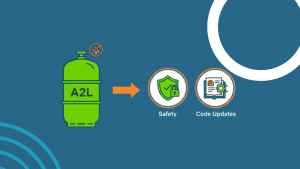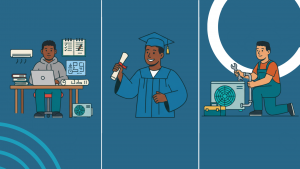The HVAC (Heating, Ventilation, and Air Conditioning) landscape is not what it was a decade ago. With rapid advancements in smart systems, energy efficiency regulations, and refrigerant management protocols, the knowledge gap is widening for businesses that neglect ongoing HVAC technician training.
For HVAC companies aiming to deliver exceptional service, retain top talent, and stay competitive, continuous learning is no longer optional—it’s foundational.
Why Is Ongoing HVAC Training So Critical?
Adapting to Technological Advancements
Modern HVAC systems are increasingly integrated with IoT, AI-based diagnostics, and smart thermostats. Technicians enrolled in an HVAC technician training program must understand:
- Variable refrigerant flow (VRF) systems
- Smart controls and automation
- SEER2 energy efficiency metrics
- Sustainable refrigerants (e.g., R-32, R-454B)
Without up-to-date training, even seasoned professionals risk falling behind.
Ensuring Compliance with Codes and Regulations
Federal and local building codes, safety standards, and EPA refrigerant regulations evolve frequently. Ongoing HVAC technician training helps HVAC professionals:
- Stay compliant with environmental laws
- Handle refrigerants responsibly
- Meet OSHA and EPA safety standards
- Avoid costly penalties or rework due to outdated practices
Boosting Customer Satisfaction Through Professionalism
A well-trained HVAC technician doesn’t just repair systems—they educate clients, explain options clearly, and provide tailored recommendations. An HVAC technician training program also enhances:
- Communication skills
- Customer empathy
- Problem-solving speed
- First-time resolution rate
These skills drive repeat business and glowing referrals.
Increasing Employee Retention and Engagement
Top technicians seek growth. Companies that invest in professional development show their commitment to their team’s future. This leads to:
- Lower turnover rates
- Higher job satisfaction
- A culture of excellence
- Stronger employer branding
Retention reduces onboarding costs and keeps knowledge in-house. Many technicians also consider how long is HVAC training and whether the HVAC training cost is supported by their employer, making company-sponsored training an attractive benefit.
Improving Operational Efficiency and Profitability
Trained HVAC teams are more efficient in diagnosing issues, selecting parts, and installing systems correctly. This leads to:
- Fewer call backs and warranty claims
- Faster job completion times
- Lower material waste
- Higher customer loyalty
When techs know what they’re doing, business runs smoother—and more profitably.
How to Implement an Effective HVAC Training Program
Here are essential elements of a sustainable, results-driven training system:
- Regular Skills Assessments: Evaluate current competencies to tailor training needs.
- Vendor-Led Workshops: Partner with equipment manufacturers for hands-on learning.
- Online Courses and Webinars: Offer flexible, up-to-date training options.
- Certifications: Encourage NATE, EPA 608, and HVAC Excellence credentials.
- Mentorship Programs: Pair new hires with experienced mentors to accelerate onboarding.
Whether someone is researching how long is HVAC training, exploring HVAC training cost, or evaluating an HVAC technician training program, businesses that provide access to these resources make training a competitive edge instead of a burden.
Final Thoughts: Training Isn’t an Expense—It’s an Investment
The HVAC industry is in a state of rapid transformation. Businesses that prioritize ongoing HVAC technician training position themselves not just to survive—but to lead.
From adopting green technologies to exceeding customer expectations, the benefits of continuous education ripple across every level of your organization.
Invest in training today, and your HVAC business will thank you tomorrow.


